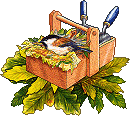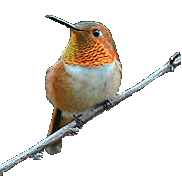The Gardeners Glove





The Simplicity of Desert Valley Blooms & Gardening of Colorado



Take The Thyme
Take The Thyme
(Thymus vulgaris)
The motto to The gardeners Glove site, "Take The Thyme" means just that. Take the time to add the herb thyme to your herb garden area. Easy to grow, will stay around for years as a perennial. Great for flavoring meats, sauces and soups. Dry the leaves and store in airtight container or freeze leaves and you can always have them handy in the kitchen for all your flavoring needs. Bees like this plant, so just beware when clipping a few cuttings. They grow like a weed, but have a nice light purple flower to add color in your herb garden.
Herbs...


Thyme
Sage

(Salvia officinalis)
Some what bitter to the taste, but Sage is great for adding flavor to meats, such as pork or sausage. A little sage in your Thanksgiving turkey dressing brings the flavor to the very top. Sage can be a drinking tea, however it does have a flavor all its own. Very easy plant to grow and likes lots of sunshine. They too have a flower of soft white, pale pink or violet. Sage can be cut and hung to dry then made into great craft ideas or placed in flower arrangements.
Rosemary

(Rosmarinus officinalis)
Not only is Rosemary used as a fragrance to perfumes or body oils, it is great in potpourri and has been known to be used as a repellent. Cooking with rosemary is wonderful in homemade stews, any meat and lots of soups. Drinking fresh rosemary dried leaves is a treat as they are in the mint family. A pretty lavender color flower pops open on the rosemary stems. This is one fine plant to add to any herb garden, for color, taste and enjoyment.
Chives

(Allium schoenoprasum)
Planting chives will surprise you, as these grow high if not attended to. Once you cut a top slice off the chive plant you will immediately smell a strong onion scent. They grow much like an onion does, but don't take as much room up in your small herb area. They come back each year if the soil is good and you cut them often. They are great in a garden salad, any spicy dish you want to add more flavor to. There budding purple flowers look like snow balls.

Parsley
(Petroselinum crispum)
An all time flavor for garnishing food trays, but the parsley is added to many different food groups. They grow close to the ground, but look like miniature trees. The parsley has always been strong for a good dose of vitamin c. So, eat away.
Oregano

(Lavandula vera)
Everyone knows oregano is great in spaghetti sauces, but oregano flavors other foods as well. The first time you use oregano that you have grown, not purchased from a store, is when you will taste the difference. You may never go back to buying store brand herbs for your everyday spices again. Much like the organic vegetable gardens, fresh grown anything is so much better tasting. Long stems will grow from an oregano plant, so again cutting and trimming all your herb plants is essential. Don't worry, they will grow back.
Lavender

(Origanum vulgare)
Now, who doesn't like the smell of lavender? You can find this fragrance everywhere. Perfume, sachets, drawer liners, body sprays, bath oils to candles. There is lavender in the air, everywhere. Why not, you will feel so nice just being around this wonderful smell all coming from a plant the looks like a weed, until the nice purple flower emerges. Try making yourself a beautiful lavender and sage heart shaped wreath, for your home or as a gift. The smell will linger for hours and you will want this plant every year in your garden.

Basil
(Ocimum basilicum)
Not just an old fashioned name, but a great flavor for a variety of food dishes. Give the basil plant lots of room for spreading out and watch a beautiful flower nestle close to the stems. There are several different varieties of the basil plant, so smell, taste and look at the plant before you buy one. Like so many herb plants that attract either the butterflies or bees, the basil plant is among that group. Great cold shrimp and rice salads in the summer call for chopped basil and what a treat that is.

Mint
(Mentha spicata)
Spearmint, peppermint or regular mint, doesn't matter if you are a mint fan. Give these plants extra room in the herb bed as they spread out and like to grow like a vine. Peppermint sprigs clipped from a plant and added to fresh brewed ice tea in mid summer is a must. Mint leaves as a garnish to desserts is very popular. Don't forget to add them to mint jams and jellies. Chopping mint to add to foods will become a regular habit, once you grow a mint plant. Many herbs can be grown indoors throughout the cold months, so add mint to any flower box or planter and enjoy.
Marjoram

(Marorana hortensis)
Another must have in your variety to having a good herb garden. Very useful in the kitchen to add flavor to all your cooking recipes. As with any of your herbs that produce a flower, try to pick the leaf before the flower blooms, otherwise your herb tends to be on the bitter side. These plants are great in single flower pots on a patio to give a nice clean fresh look. Tiny white blossoms appear and look ever so appealing the viewer.
Catnip

(Nepeta cataria)
Try not to think of cats when planting your catnip herb plant. In the mint family, catnip for a long time has been a great drinking tea. It's said to aid in the common cold and has a mild taste so can become a favorite in no time. Yes, the household cat (feline) like to nip at the leaves, but it won't hurt them. A nice purple flower grows on these plants and they need lots of growing space.
Dill

(Anethum graveolens)
Want a great flavor to your fish, salad oils or salads? Add Dill. Pickling and so many other choices the dill can be added to. Very easy to grow and the dark leaves are the dill weed. The flower heads are so attractive and give a flair to your herb garden.

Growing your own Herb Garden:
Make this year your time to start planting some herbs. Start with just a few of your favorites that you know you will use. A good beginner variety is, Parsley, dill, oregano, chives, basil, mint and thyme. You add as you go. Start your first herb garden with starter plants that are about 4 - 5 inches tall. You want to start off with having a herb garden that you are ready to admire and begin enjoying as soon as the plants mature just enough to have clippings and not kill the plant off. Any place you want to grow your herbs will be just fine, whether they are in containers resting on your kitchen window shelf or a small outside area you have set aside just for herbs. You decide, as you will be the one caring for these mighty plants. By early summer, you won't believe how big and wonderful your starter plants have grown. In choosing your favorite herbs, remember they are not just to look nice, they are to enjoy in flavorful foods. Many of the selections mentioned are for, meats, sauces, soups and garden salads. Fresh mint is great for teas and ice cream. You will be clipping off dill all through the summer months to add a nice addition to your patio served garden salads. Herbs have so many other additional areas of use, but for the beginner, just start off thinking you are growing these fragrant plants for food flavoring and then advance to other areas of use, in adding them for medicinal uses.Herb gardens are a great gift to give to friends and family. Everyone should try their hands at growing a few simple herbs at some time during the spring and summer months. Take the Time to add herbs to any flower or vegetable garden area and watch a wonderful display of activity begin.
